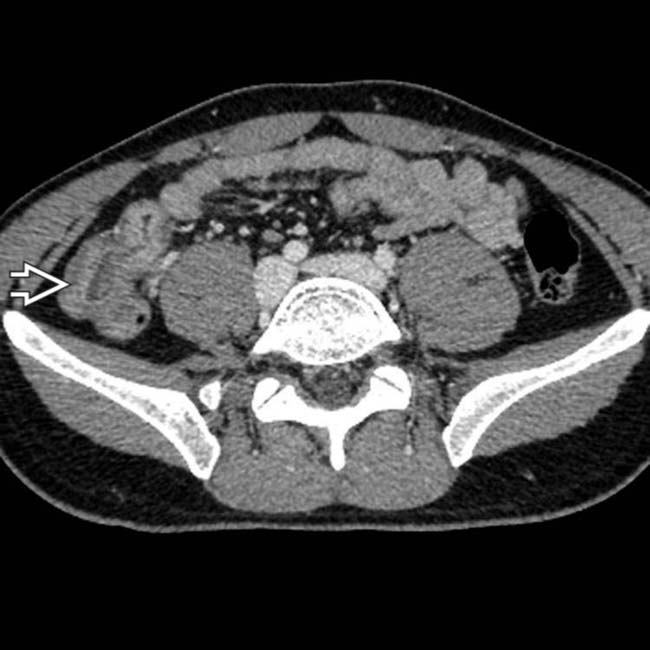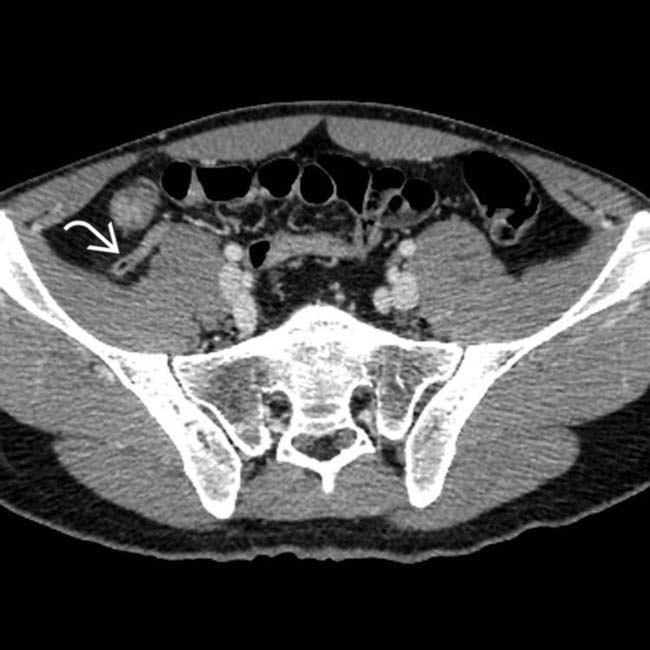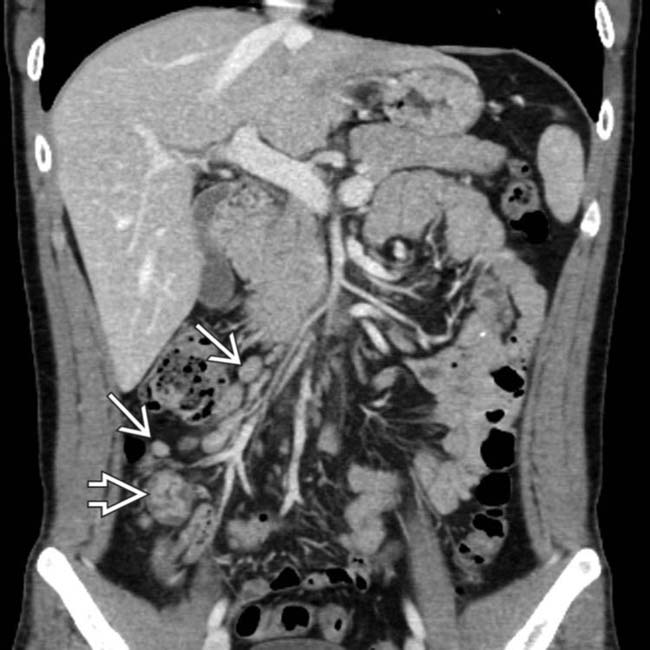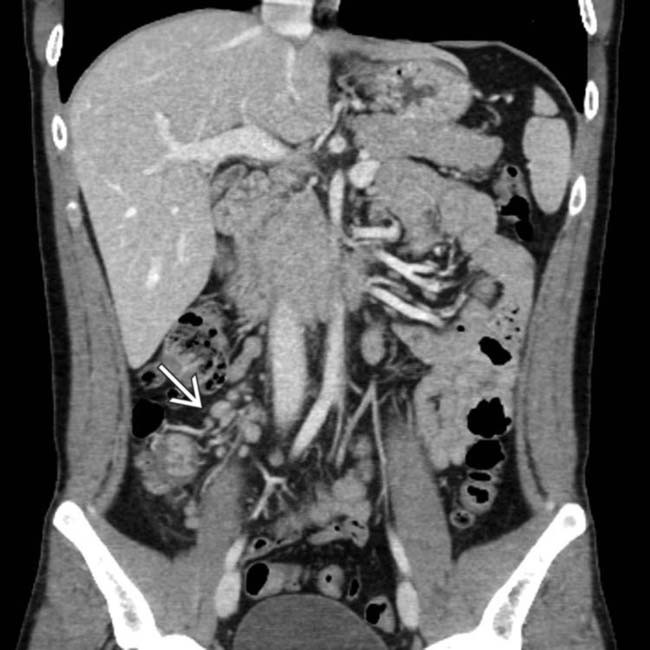1. Patlas, MN, et al. Cross-sectional imaging of nontraumatic peritoneal and mesenteric emergencies. Can Assoc Radiol J. 2013; 64(2):148–153.
2. Toorenvliet, B, et al. Clinical differentiation between acute appendicitis and acute mesenteric lymphadenitis in children. Eur J Pediatr Surg. 2011; 21(2):120–123.
3. Lee, MW, et al. Sonography of acute right lower quadrant pain: importance of increased intraabdominal fat echo. AJR Am J Roentgenol. 2009; 192(1):174–179.
4. Pickhardt, PJ, et al. Unusual nonneoplastic peritoneal and subperitoneal conditions: CT findings. Radiographics. 2005; 25(3):719–730.
5. Rao, PM, et al. CT diagnosis of mesenteric adenitis. Radiology. 1997; 202(1):145–149.
6. Puylaert, JB. Mesenteric adenitis and acute terminal ileitis: US evaluation using graded compression. Radiology. 1986; 161(3):691–695.

 .
.
 , excluding appendicitis as the diagnosis.
, excluding appendicitis as the diagnosis.
 , along with the thick-walled, inflamed terminal ileum
, along with the thick-walled, inflamed terminal ileum  .
.
 , along with the thick-walled terminal ileum. These are classic imaging and CT features of mesenteric adenitis and enteritis, and the patient made an uneventful recovery without specific therapy.
, along with the thick-walled terminal ileum. These are classic imaging and CT features of mesenteric adenitis and enteritis, and the patient made an uneventful recovery without specific therapy.































